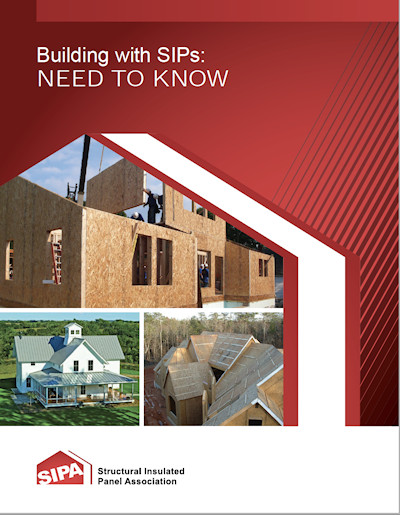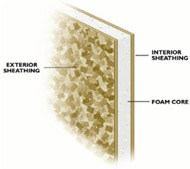 If you’ve been wanting to learn more about SIPs, SIPA (Structural Insulated Panel Association) recently published two documents to help designers and builders better understand the process of using this high-performance building system.
If you’ve been wanting to learn more about SIPs, SIPA (Structural Insulated Panel Association) recently published two documents to help designers and builders better understand the process of using this high-performance building system.
Building with SIPs: NEED TO KNOW provides readers with Building Considerations for right- sized HVAC equipment, plumbing design, the reduction of electrical labor due to factory cut chases, and more. The extensive document also includes Checklists for anything from the High-Performance Building Envelope to Shop Drawings to Roof and Wall Assemblies. In the High-Performance Building Envelope section, you are walked through steps to make sure the SIP envelope is as high-performing as possible while using the correct mechanical systems to create the most optimal, healthy, indoor air quality. Also included is a reminder to seal all penetrations and have a blower door test performed to verify you have no leakage.
Designing with SIPs: DESIGN CONSIDERATIONS was created to assist during the design phase and make the process smoother when using SIPs. Much of the Design document is the same content as the Building document with some additional key learning points in the Checklist section. Both are free in digital format.
 Photo courtesy SIPA
Photo courtesy SIPA
Designed for residential and light commercial construction, SIPs are panels with an insulated foam core fixed between oriented strand board (OSB) or, sometimes, other structural material. It is reported that certain versions of foam core panels were used as far back as the late 1930’s.
Besides the obvious high performance, energy efficient benefits of using SIPs, they can also shorten construction time (possibly saving you money) and are extremely strong. Designing and building properly using SIPs can result in extremely low energy bills. Download the education material here.